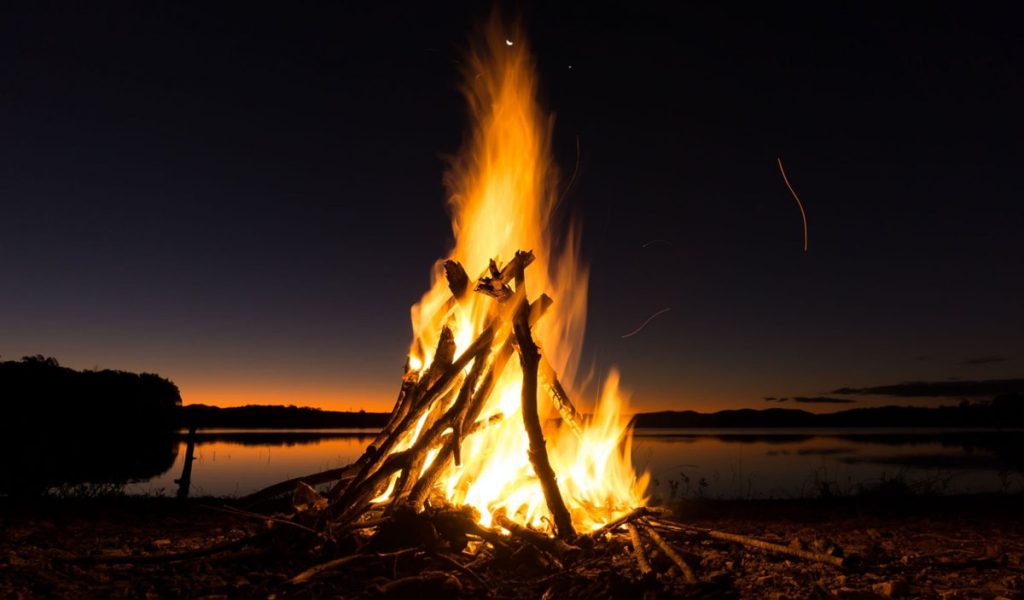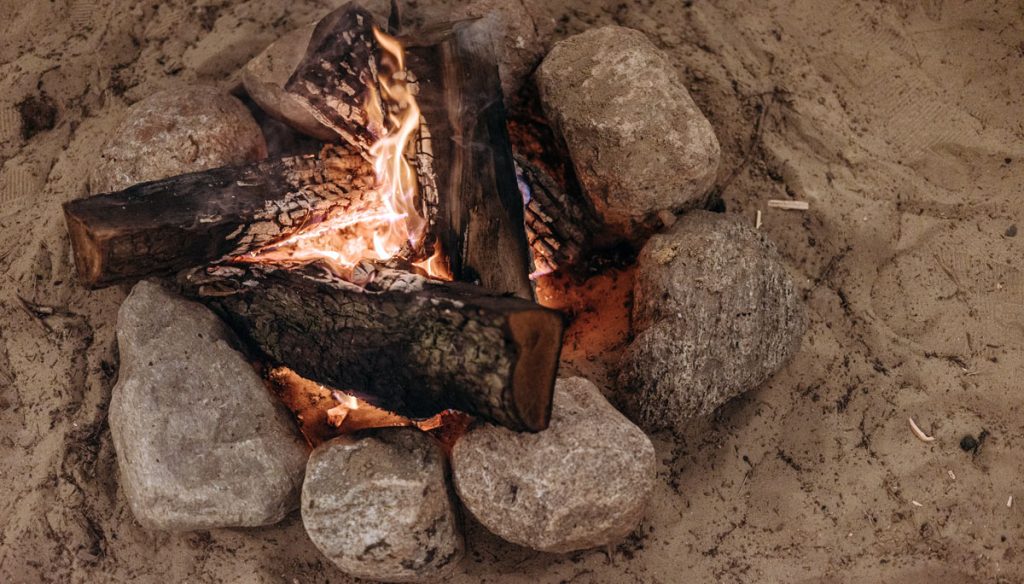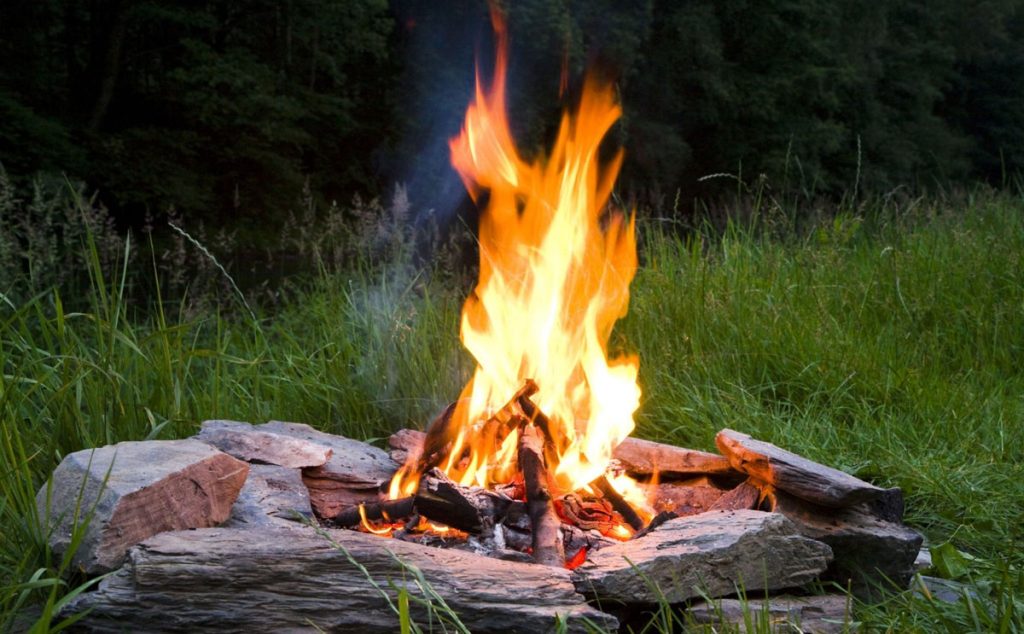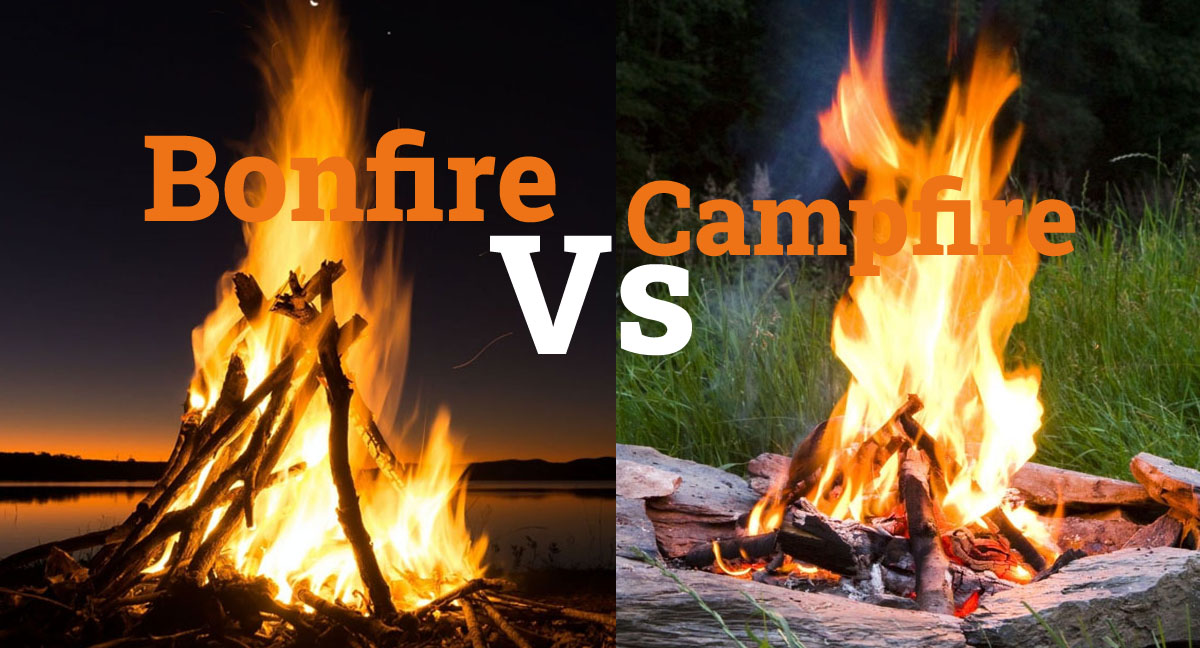Campfires are great for cooking food over open flames, but they also produce harmful smoke. Are campfires safe or should you always opt for bonfires instead?
Bonfires are traditionally lit at special occasions such as birthdays, weddings, and other celebrations. They provide warmth and light during cold nights. In addition, they create a sense of community and bring families together.
However, fires can cause serious health problems. Smoke from a fire contains carbon monoxide (CO), nitrogen dioxide (NO2) and particulate matter (PM). These pollutants can damage lungs and heart, causing respiratory diseases and cancer.
The best way to avoid these risks is by using an alternative method called the “Campfire Safety Checklist”. This checklist includes all the things that need to be done before lighting a fire. It will help ensure your safety while providing a warm welcome to family and friends.
Both are controlled outdoor fires, so what’s the difference between them?
Bonfire vs Campfire: What is the Difference
Let’s go over everything clearly, bonfire vs campfire:
What is Bonfire?
A bonfire is a type of outdoor fireplace that burns wood, wastage. It can be used for cooking, heating, and even lighting. A bonfire is also known as a “backyard barbecue” because it is typically built on your backyard patio or deck.

A bonfire is a type of outdoor fireplace that burns wood and wastage. It can be used for cooking, heating, and even lighting. A bonfire is also known as a “backyard barbecue” because it is typically built on your backyard patio or deck.
The main purpose of lighting a bonfire is to burn waste. Also, you can use it to heat up your home or just enjoy the view.
A bonfire is built in an open area such as a field or meadow. It’s usually made from large pieces of fire resistant material such as large logs, wooden tables, wooden chairs, brush, and/or wooden pallets.
How to Build a Bonfire?
To build a bonfire, you will first need to collect all the required materials. Then, you will have to light the fire with lighter fluid. Once the fire has started, you will need to add more fuel to keep it burning.
Start by digging a hole deep enough to hold your fire and then pile up dirt around the edge. Add kindling’s (small sticks) and small amounts of dry grasses and leaves. Place larger wood logs on top of these items. When the starts to catch fire, add bigger pieces of wood until the flames spread out evenly across the entire surface. Do not use lighter fluid or gasoline on a fire. Lighter fluid and gasoline can explode if they come into contact with open flames.
When someone lights a match, they strike it against something flammable, such as a piece of newspaper or cotton rag. The friction causes sparks to fly off the match head, igniting the surrounding material. A lighter works similarly, except instead of striking a match, the user presses down on a metal wheel containing an electric current. Sparks ignite the gas inside the wheel, causing a spark to jump between two electrodes. In both cases, the ignition process begins with a lit match or lighter, which provides enough heat to start a fire.
You need to be careful not to leave it anywhere near any flammables and use heavy objects to secure it.
Purpose of Bonfires
Bonfires were used for religious purposes by ancient civilizations. They called them Bone Fires because they burned bones to frighten away evil spirits.
Ancient people used fires for religious purposes. They’d light them up at holy sites and hold festivals where they’d gather together to honor their gods.
Large-sized fires make bonfires ideal for disposing of waste. One example would be old carpets, old desks, discarded photographs of your former spouse, or even your child’s unfinished schoolwork.
Bonfires used to be lit at certain times of the year by people in different countries. Some still do so today. Some simply use them for celebrations during fall.
What should I use for my fire pit or fire ring?
You can use any type of fire pit you like. The most common ones are made from concrete blocks, bricks, stones, metal, or even dirt.

You can also make one yourself if you have some tools and know how to work with them.
If you want to build your own fire pit or fire ring, here’s what you need:
- A hole about 2 feet deep and 3 feet wide
- Concrete blocks or bricks
- Sand
- Water
- Tools
- Wood – You will need at least 4-6 inches thick for this project.
- Shovel
- Rake
- Bucket
- Long stick
- Cloth
How to start fire burns
There are many ways to start a fire. Here are three different methods:
1. Build a small fire inside your fire pit. This method works best if you don’t mind having a smoky fire.
2. Start a big fire outside on a flat surface. If you have a lot of space around you, then you may want to try starting a fire in an area where there isn’t much wind.
3. Start a fire in a chimney. This is probably the easiest way to start a fire because all you need is a chimney starter.
Bonfire Is a Controlled Fire
A bonfire is a controlled fire. It is meant to provide heat and light for people who live in tents or cabins.
It is important to remember that a bonfire does not produce enough heat to cook food. Cooking food over a fire requires more than just heat.
In addition, a bonfire produces smoke which contains harmful chemicals. These chemicals include carbon monoxide, nitrogen oxides, sulfur dioxide, and particulate matter.
What are the benefits of a bonfire?
Benefits of a bonfire include:
- Provides warmth during cold nights
- Can be used to keep insects away
- Creates a great atmosphere
- Provides a place to gather with friends and family
- Makes a good center point for camping trips
- Keeps children entertained
- Provides a fun activity for adults
- Removes trash from campsites
- Burns waste materials
- Allows you to enjoy nature without disturbing wildlife
- Helps reduce the risk of forest fires
- Improves mental health
- Promotes relaxation
- Reduces stress
- Provides a sense of community
- It’s easy to put out a forest fire and it could potentially save lives.
What is Campfire?
Campfires are another type of outdoor fire that is often used for cooking food. It is usually built in a pit or hollowed out area. This fire is generally smaller than a bonfire.

There are many benefits of having a campfire. For one thing, it makes cooking easier. You don’t have to carry pots and pans over long distances. Plus, you can cook directly over the fire without worrying about hot coals falling onto your food.
A campfire also serves as a form of entertainment. People like to sit around a fire and tell stories. Or, they’ll play games while sitting around the fire. When building an outdoor campfires, use pine or cedar logs for best results. They create a beautiful fire with a nice scent that burns for a short time.
The biggest benefit of a campfire is that it’s easy to set up. All you need is some kindling, a few logs, and a shovel.
How to build Campfires
To create a campfire, first dig a hole in the ground. Then, place some kindling in the bottom of the hole. Next, place a log on top of the kindling. Finally, cover the whole thing with dirt.
Once the fire has started, you should keep adding more fuel to it. If you’re using wood, you can either stack the logs vertically or horizontally.
If you want to build a large fire, you may need to bring in additional materials. For instance, if you live in a cold climate, you might need to bring in sand from a nearby beach.
Once you’ve got everything ready, you just need to wait for the fire to burn itself out.
Types of Campfires
There are several types of campfires:
1) Wood Fire – This is the most common type of campfire. It uses wood as its main source of fuel.
2) Charcoal Fire – This is similar to a wood fire, but it uses charcoal instead of wood.
3) Gasoline Fire – This is made by pouring gasoline into a small container. Once the gasoline burns, it creates a lot of smoke.
4) Electric Fire – This is created by placing a wire mesh basket filled with rocks next to a battery. As soon as the battery powers up, electricity flows through the wires, creating a spark.
5) Alcohol Fire – This is created when alcohol is poured into a bucket. Once the alcohol starts burning, it produces a lot of smoke.
Purpose of Campfires
Although there are many reasons why you might want to start a campfire, here are three of the most popular ones:
Cooking Food
This is probably the most obvious reason why you would want to start a camp fire. When you cook food over an open flame, you get all sorts of delicious flavors.
You can cook almost anything over a campfire. However, meat is best cooked on a grill. Learn more about the best cooking kit for the campfire.
Warm
Another reason why you might want to light a campfire is because it warms you up. In fact, this is the primary purpose of a campfire.
When you sit around a campfire, you feel warmer than you normally would. The heat from the flames helps warm you up.
If you are camping in winter, then you will be able to stay much warmer by starting a campfire.
Entertainment
One of the things people do at a campsite is enjoy themselves. They like to sing songs, tell jokes, and play games.
In order to make these activities more enjoyable, you need to provide them with something to entertain them. That’s where a campfire comes in handy.
It provides people with a way to relax and have fun.
See also campfire recipes: Campfire Queso, Campfire Cake, Campfire Mocha Caribou Coffee, Campfire Chicken Recipe
Conclusion
A campfire is one of the most important tools for camping. Without a campfire, you wouldn’t be able to cook meal, keep warm, and have fun.
However, if you aren’t careful, you could set yourself on fire. To prevent this from happening, follow the above safety tips. I hope this guide is enough to better understand the difference between a bonfire and a campfire.
You may like also: The most winter camping essentials for outdoor adventures.
Sukhen is a passionate blogger and traveler who visited many historical places in Bangladesh, Myanmar, India, and Thailand. He’s an avid camper, so he shares his knowledge of camping and wildlife with his readers. He also helps readers plan their own camping trips. To know more, stay connected with Outdoor Awaits.

